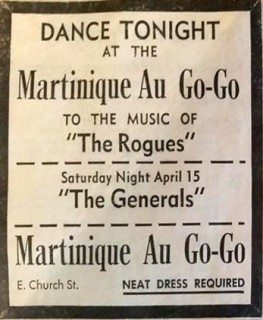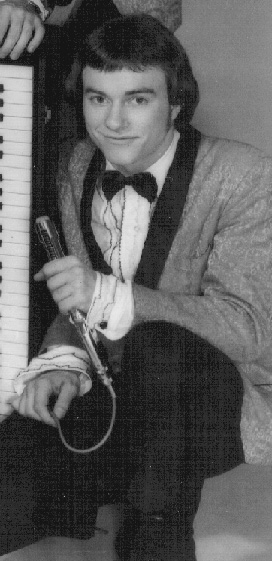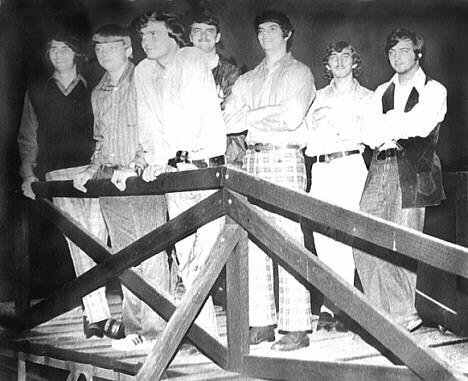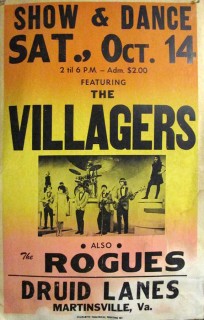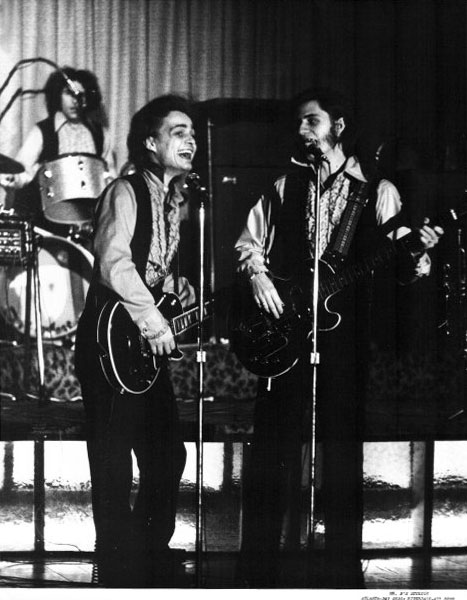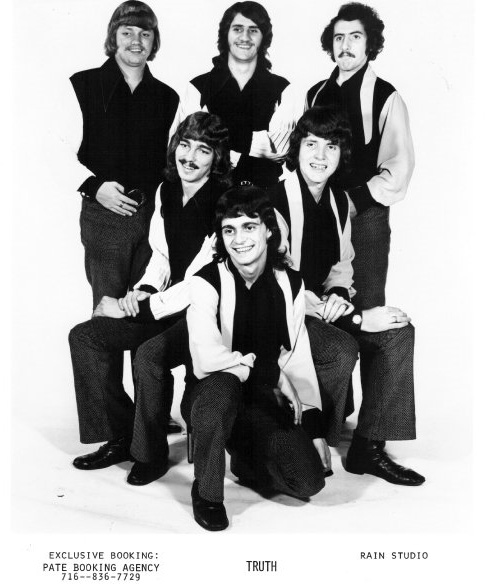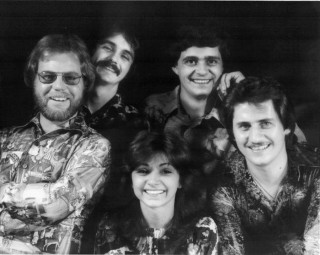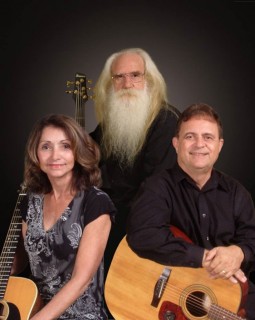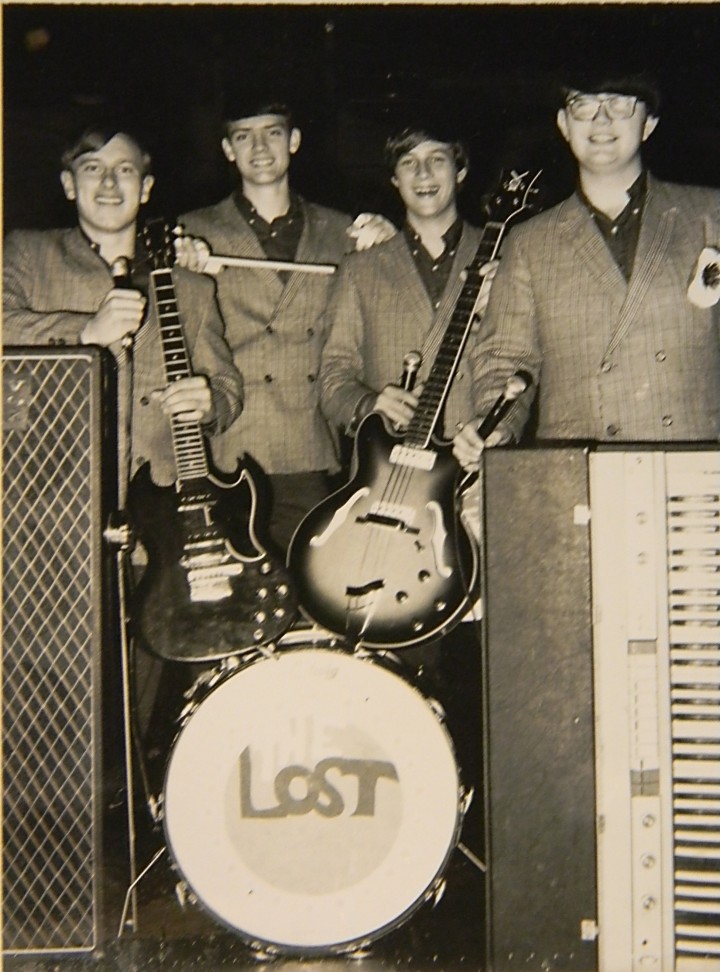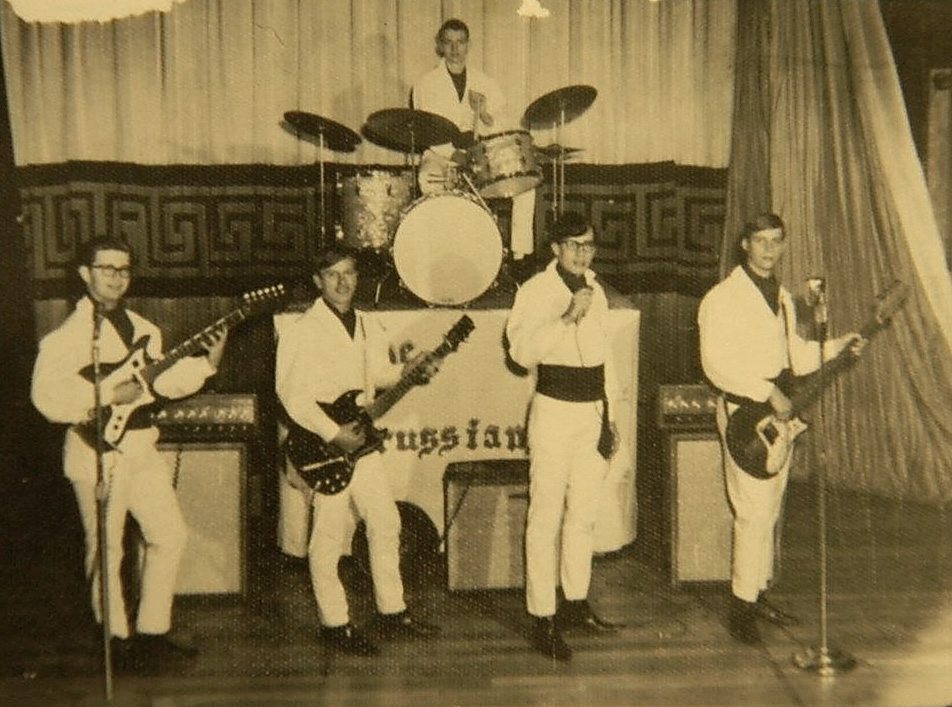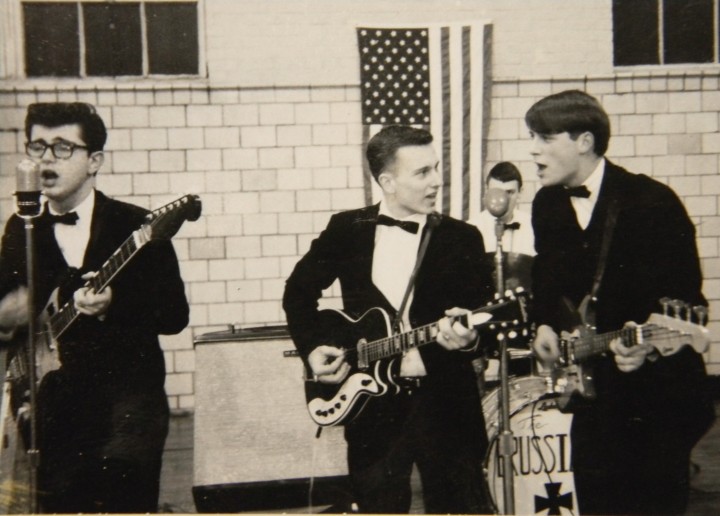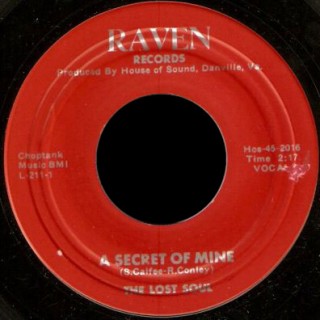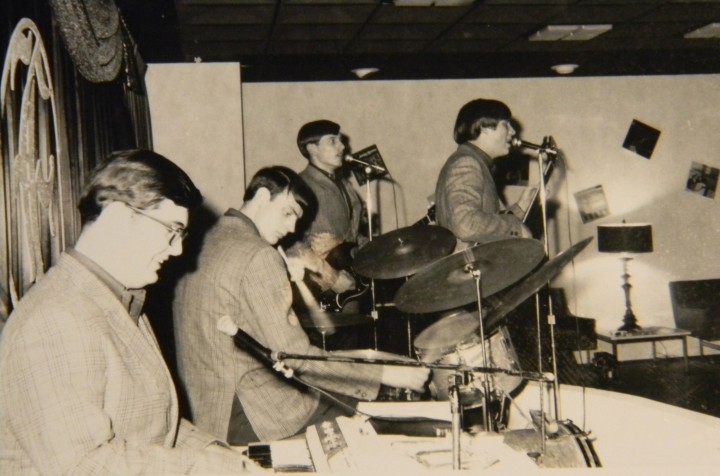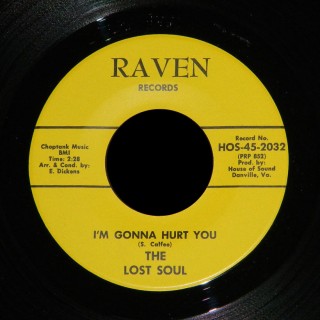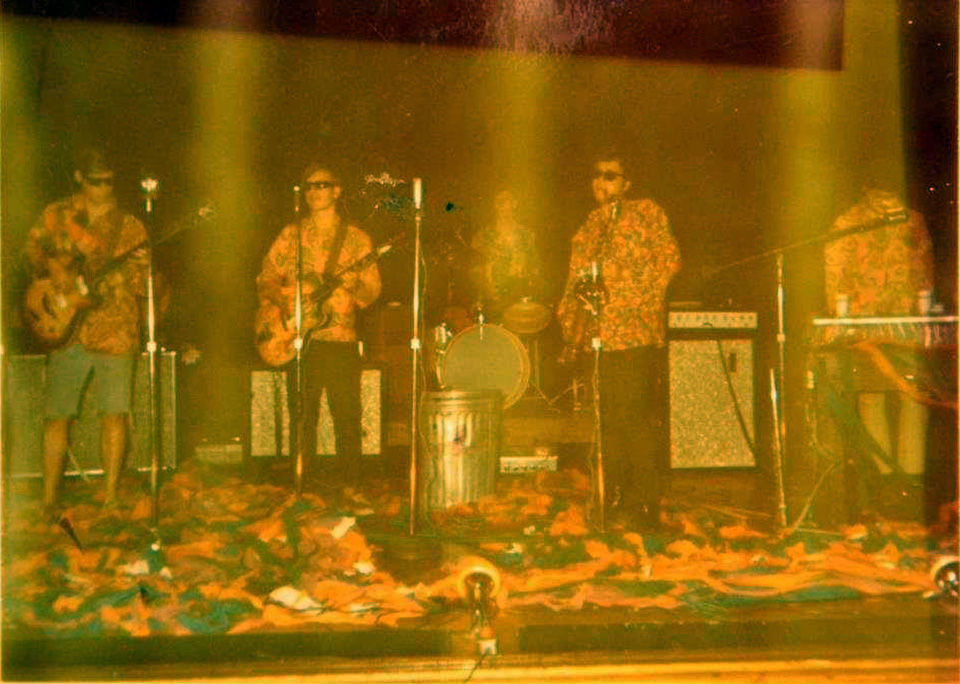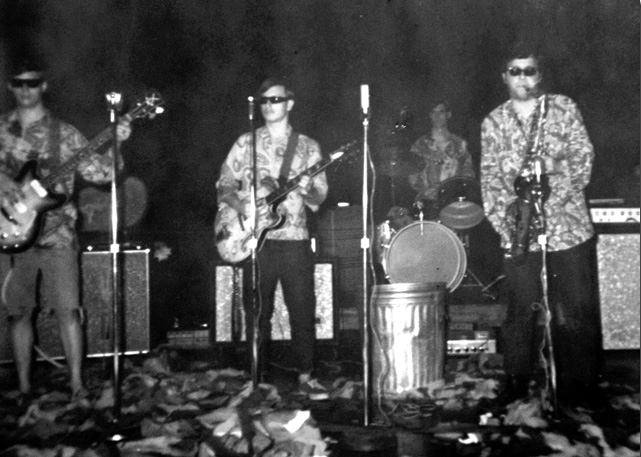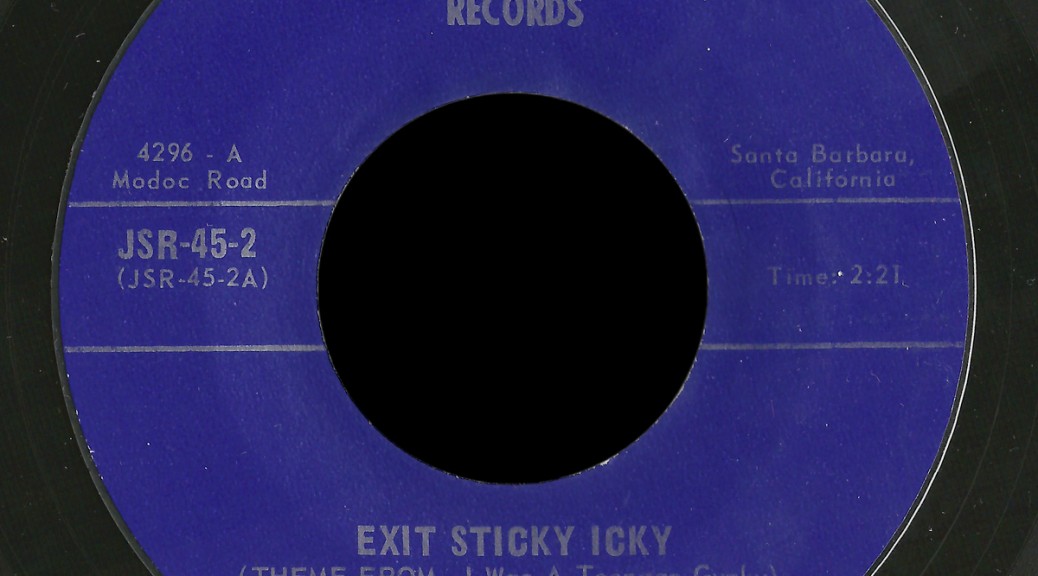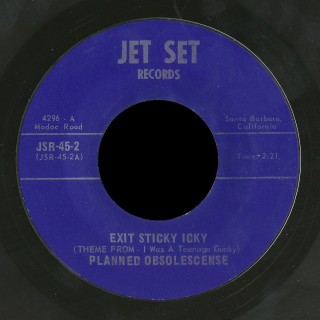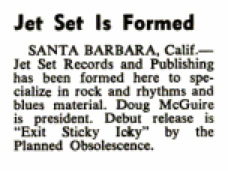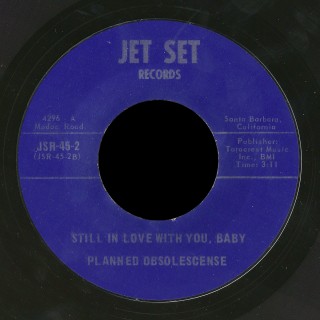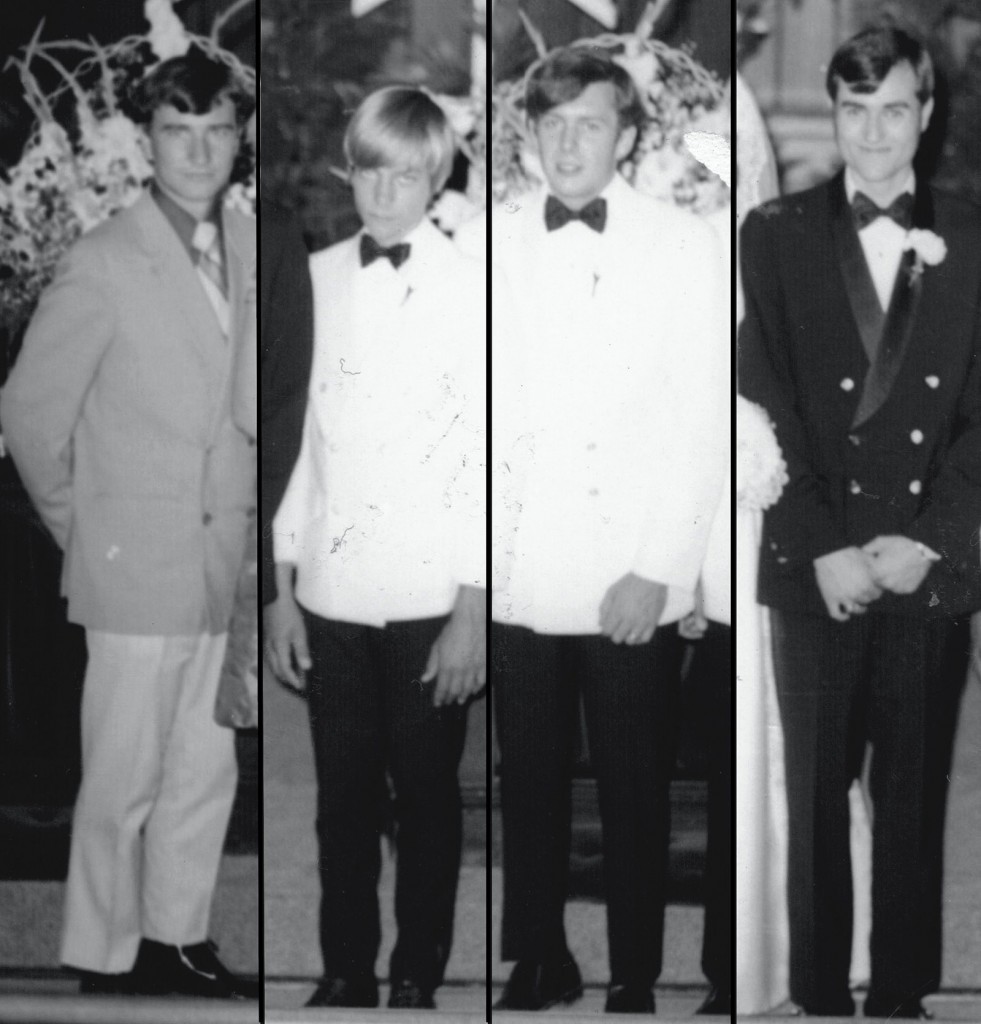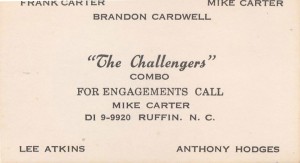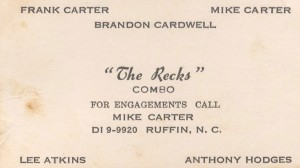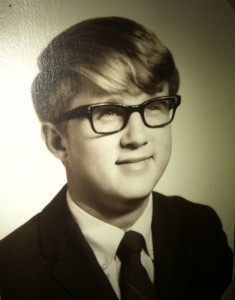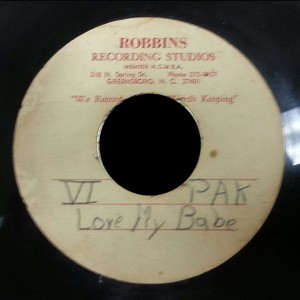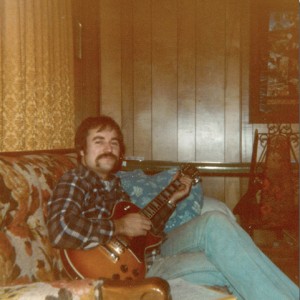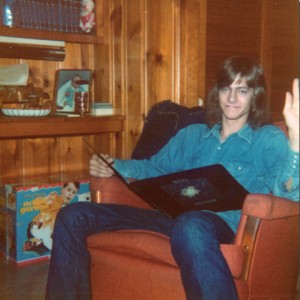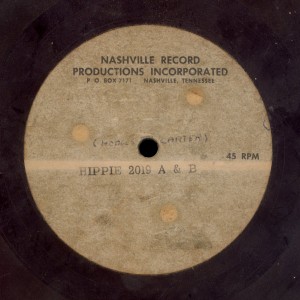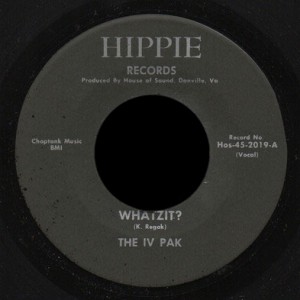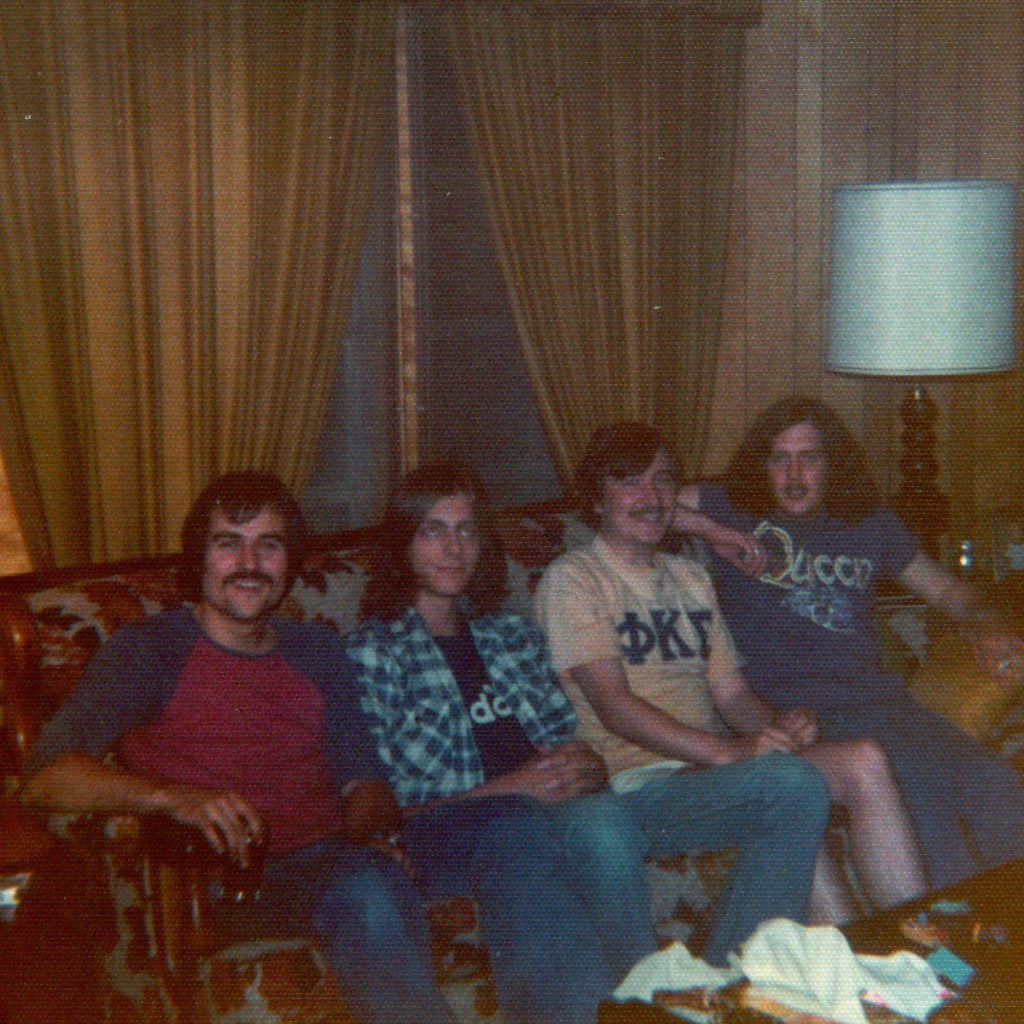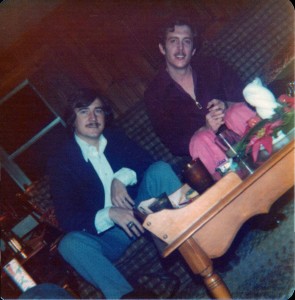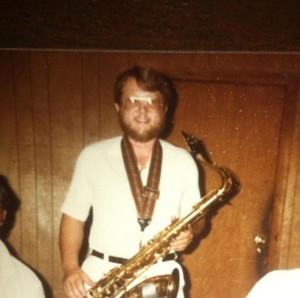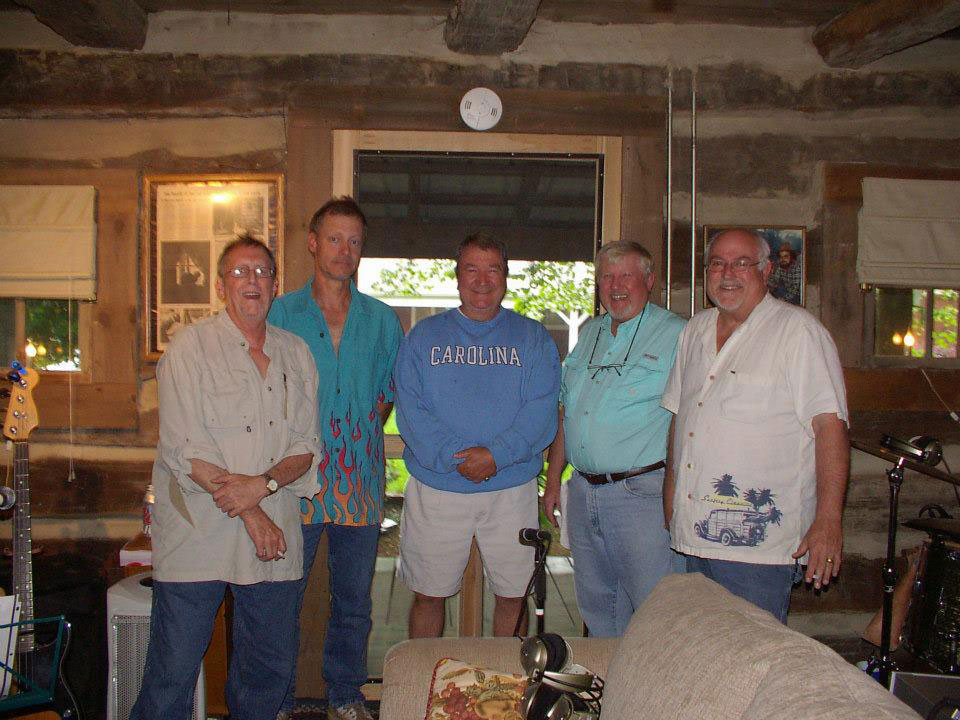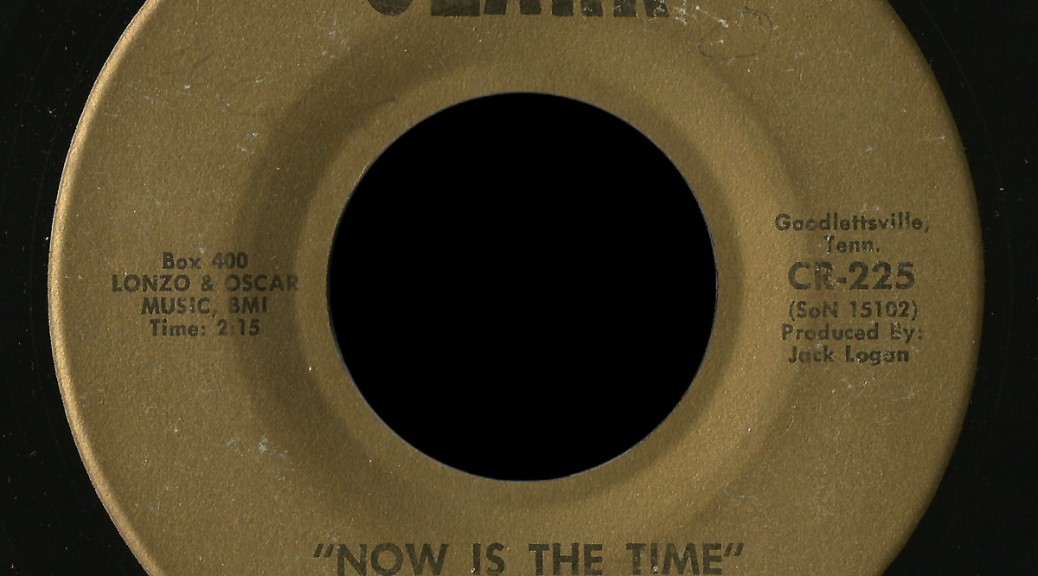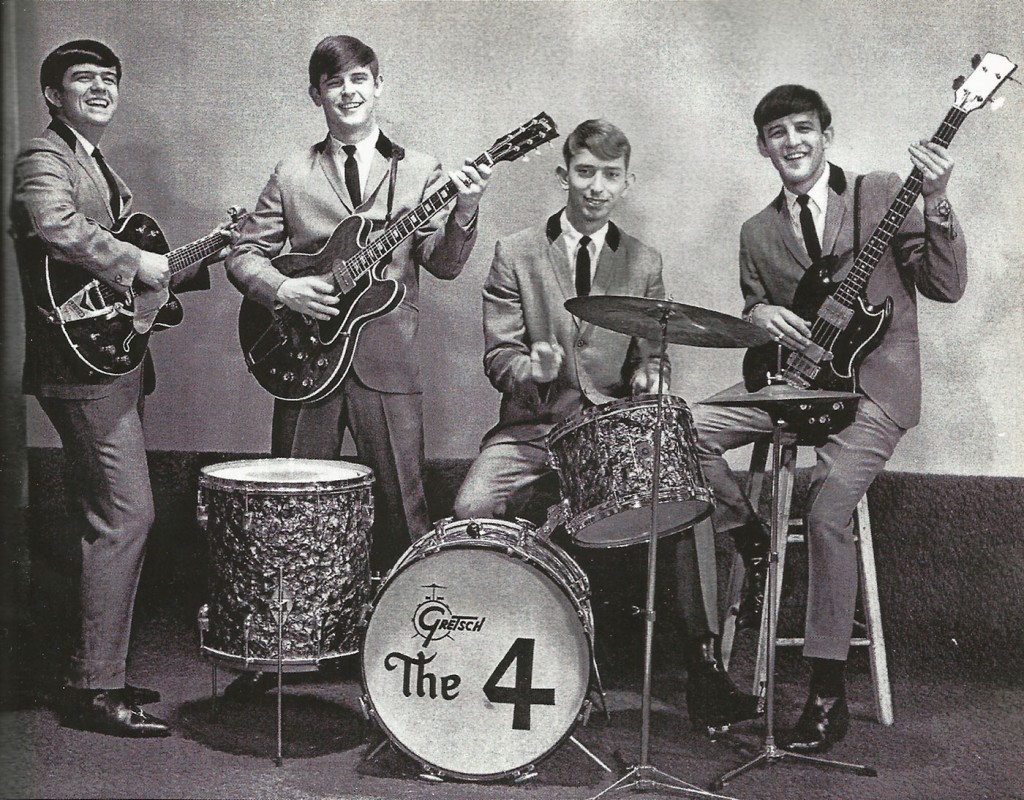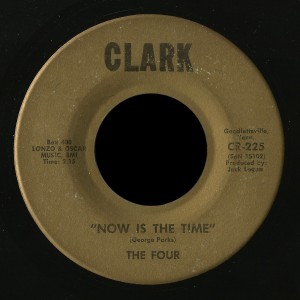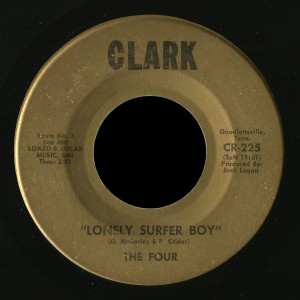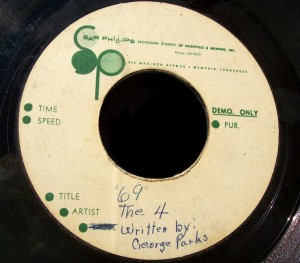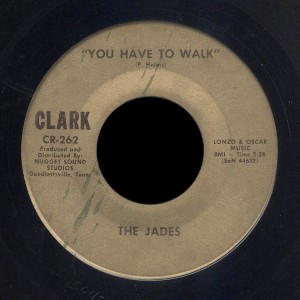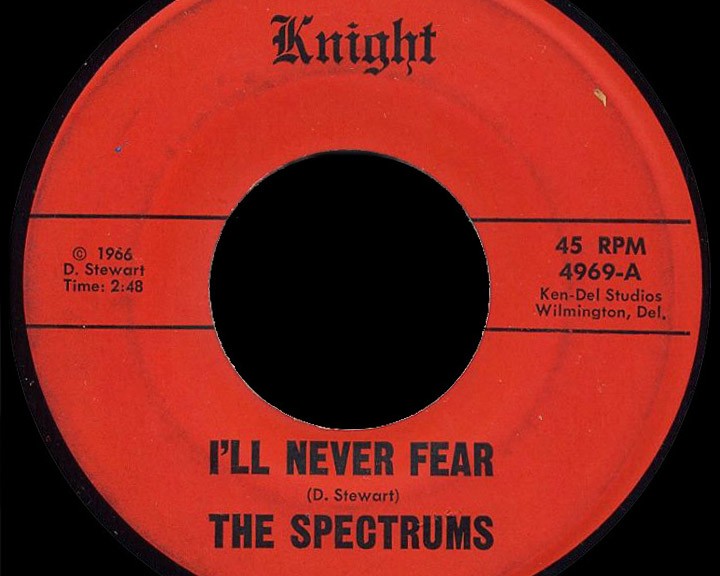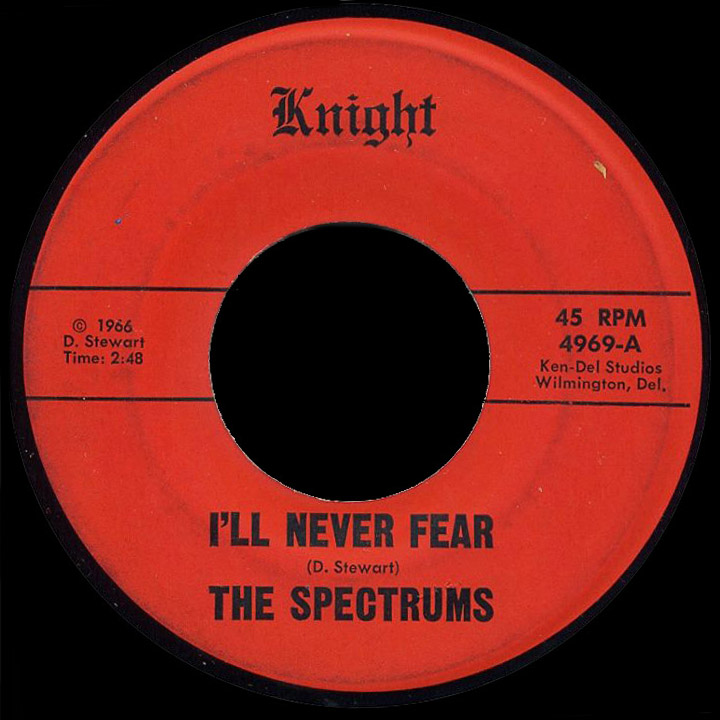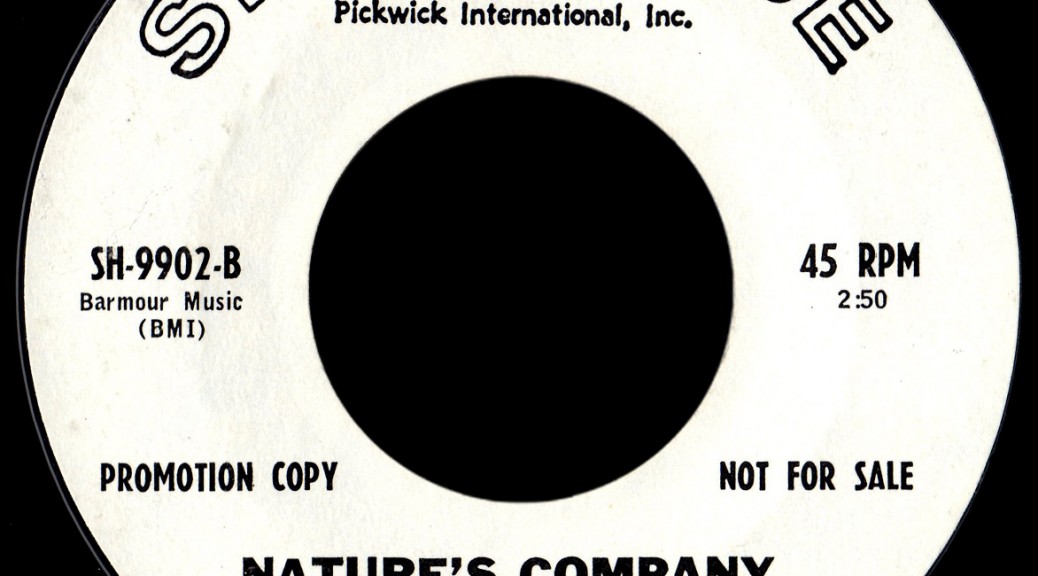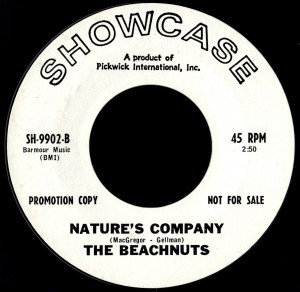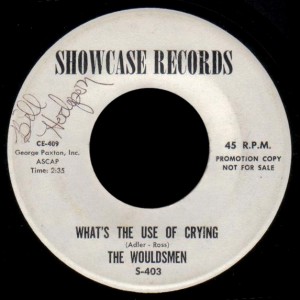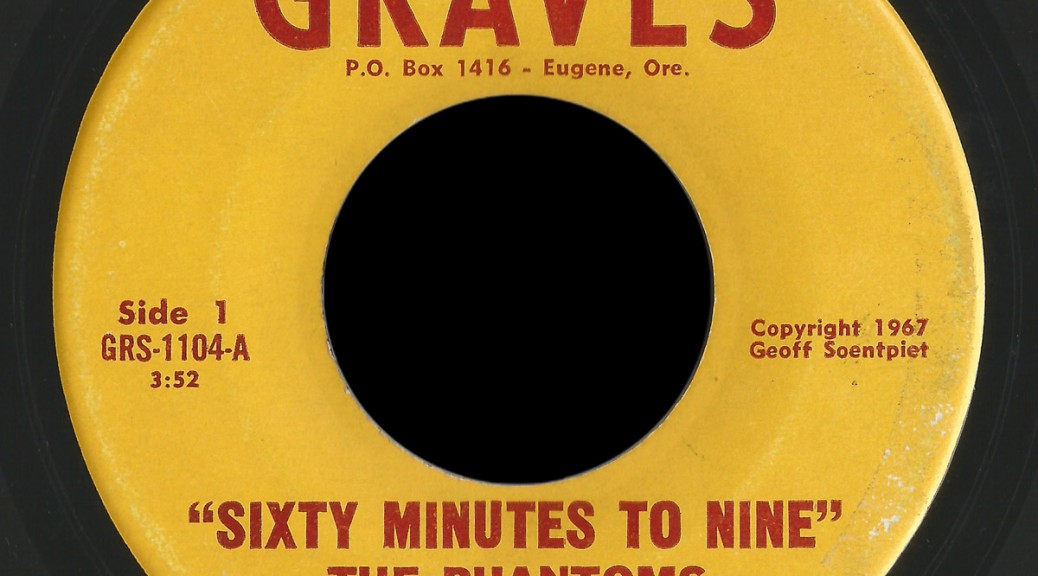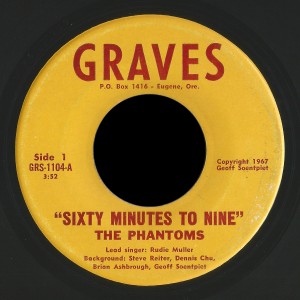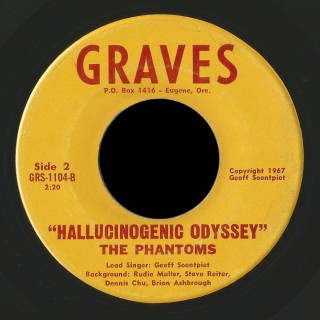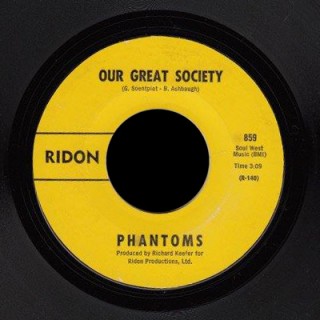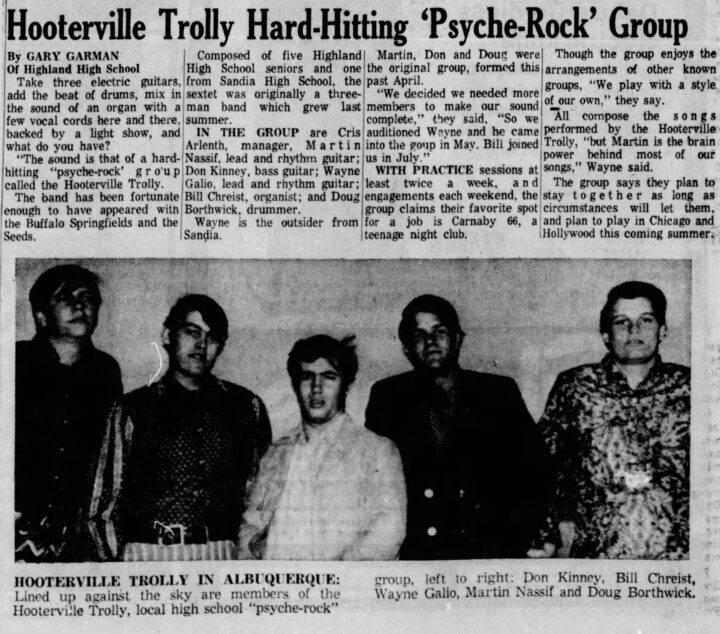
The Hooterville Trolley’s “No Silver Bird” is a hypnotic track with string and sound effects probably produced by a Chamberlain, a keyboard with tape sampler, a precursor to the Mellotron.
Long considered to be a studio group only, the Hooterville Trolley who cut “No Silver Bird” were a working band in Albuquerque, New Mexico.
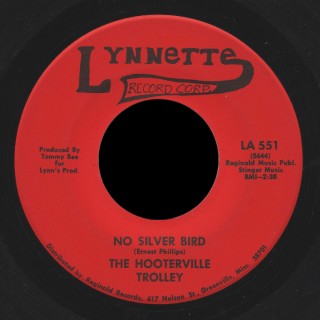 Gary Garman wrote a profile of the band in the Albuquerque Journal on December 4, 1967:
Gary Garman wrote a profile of the band in the Albuquerque Journal on December 4, 1967:
Hooterville Trolly Hard-Hitting ‘Psych-Rock’ Group
The sound is that of a hard-hitting ‘psyche-rock’ group called the Hooterville Trolly.
The band has been fortunate enough to have appeared with the Buffalo Springfield and the Seeds.
Composed of five seniors from Highland High School seniors and one from Sandia High School, the sextet was originally a three-man band which grew last summer.
In the group are Cris Arlenth, manager; Martin Nassif, lead and rhythm guitar; Don Kinney, bass guitar; Wayne Galio, lead and rhythm guitar; Bill Chreist, organist; and Doug Borthwick, drummer. Wayne is the outsider from Sandia.
Martin, Don and Doug were the original group, formed this past April.
“We decided we needed more members to make our sound complete,” they said. “So we auditioned Wayne and he came into the group in May. Bill joined us in July.”
With practice sessions at least twice a week and engagements each weekend, the group claims their favorite spot for a job is Carnaby 66, a teenage night club.
…
“We play with a style of our own,” they say.
All compose the songs performed by the Hooterville Trolly, “but Martin is the brain power behind most of our songs,” Wayne said.
The Hooterville Trolley played at least twice at Sandia High School, once for the Cheerleaders’ Dance on October 21, 1967, and again during the school’s TWIRP week (The Woman Is Required to Pay), probably Friday, February 16, 1968, featured in the Sandia yearbook for 1968. Note the band’s name is spelled Hooterville Trolly in most news clippings, their drum head, and in the sign at the front of the stage.
I asked Bill Chreist a number of questions, including how the group formed:
The band was formed in 1967 in Albuquerque New Mexico. The original members of the band were Don Kinney (bass & vocals), Martin Nasiff (lead guitar & lead vocals), Bill Chreist (keyboards & vocals), Wayne Galio (rhythm guitar) and Doug Borthwick (drummer and back up vocals). We played live at dance clubs in Albuquerque (Carnaby 66 was one of the popular clubs in 1968), Santa Fe & Colorado. We also played at the Hullabaloo club in Oklahoma.
“No Silver Bird” / “The Warmth of Love”
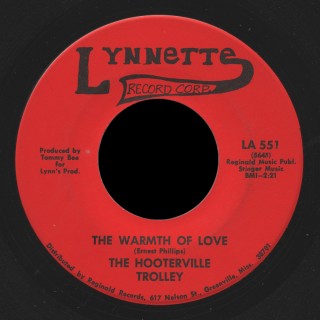 On July 7, 1968, the Hooterville Trolley went into Norman Petty’s recording studio in Clovis, New Mexico with producer Tommy Bee. They cut two songs, “No Silver Bird” / “The Warmth of Love”, both previously recorded on a single by another Albuquerque, New Mexico group, The Creation.
On July 7, 1968, the Hooterville Trolley went into Norman Petty’s recording studio in Clovis, New Mexico with producer Tommy Bee. They cut two songs, “No Silver Bird” / “The Warmth of Love”, both previously recorded on a single by another Albuquerque, New Mexico group, The Creation.
The Creation were two brothers, Al and Mike O’Donnell, plus Ernest Phillips. They were young musicians who landed a publishing deal with Tenmand Music run by Joe Green. They recorded two singles of their original songs on the Centurion label in late 1967.
Possibly through Ernest Phillips, who was employed by Tommy Bee Enterprises around this time (according to the Billboard 1969 Intl. Tape Directory), or through someone handling distribution at Lance Music Enterprises, the Creation’s second single made its way to Tommy Bee.
The Hooterville Trolley had no connection to the Creation. Ernest Phillips’ name was kept on the writing credits (but O’Donnell was left off of “The Warmth of Love”) and the publisher switched from Tenmand to Tommy Bee’s Stinger Music and Henry Reginald Hines’ Reginald Music Publ.
Bill Chreist told me:
Ernest Phillips wrote the original song but we (Martin, Don and I) re-wrote the words because we didn’t think the original words were “heavy” enough for the songs of that time, but let him still get the credit for the song.
Norman Petty who owned the recording studio had just received a new “string machine” that he was excited to try out. He asked us if he could add it to the song “No Silver Bird” saying if we didn’t like it he would take it out. We told him to go ahead and see what he could come up with. We loved it and thought it added a new sound that we hadn’t heard before. The only problem was when we played live we couldn’t duplicate it but no one seemed to care at the dances we played at.
The song was played a lot in Albuquerque but never became a national hit. Our manager at the time (Tommy Benavidez) paid for the recording so he owned the master.
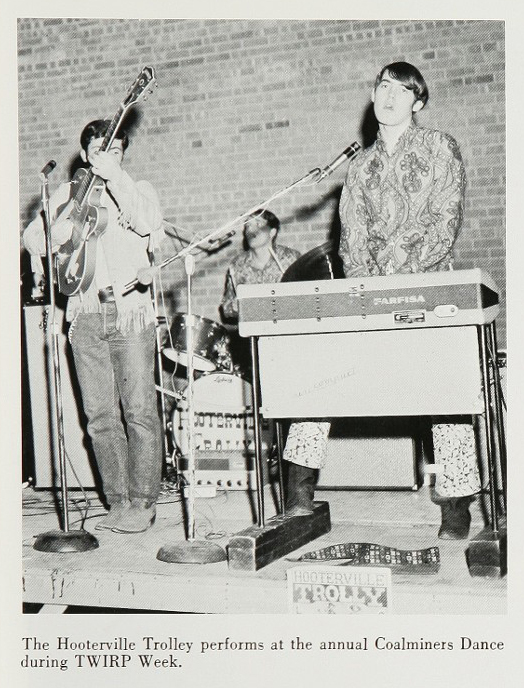
Like the Creation’s song, the Hooterville Trolley’s version has only six lines, but these are sung twice:
Go, get ready to fly,
Lock all the doors as if to hide,
Don’t worry about faces inside,
Just come with me, and ride.Go, get ready to fly,
You’ll see silver birds in the sky,Go, get ready to fly,
Lock all the doors as if to hide,
Don’t worry about faces inside,
Just come with me, and ride.Go, get ready to fly,
You’ll see silver birds in the sky.
Regarding the string sounds, Alec Palao says he believes Norman Petty had a Chamberlin, a U.S. manufactured precursor to the Mellotron. Alec added “Petty treated instruments a lot with EQ, compression and echo/reverb, and got some pretty unique sounds in the process. His multi-tracks are amazing to listen to.”
Six months after recording, in January of 1969, Bee released the songs on Lynnette Record Corp. LA 551; Lynette was connected to Hines’ labels in Greenville, Mississippi (see below).
The Creation’s O’Donnell brothers were unaware of the Hooterville Trolley’s versions of their songs until 2018.
A few months before the single was cut, the Hooterville Trolley was involved in a violent incident. The Albuquerque Tribune reported on March 16, 1968:
Band Player Stabbed In Fight Over Music
A young Albuquerque musician was beaten and stabbed at the Paradise Hills Country Club because a gang of boys though the band was not playing “soul music” at a teen dance, sheriff’s officers reported.
A guitar player for the bnad, 17-year-old Bill Chreist of 1015 Washington NE was in Presbyterian Hospital today with a stab wound on the left side.
Young Chreist, who plays with the “Hooterville Trolly” rock and roll group was beaten and stabbed in a fight with approximately 15 boys, officers said.
One member of the five-man band said the fight occurred after the dance was over and the group was packing up to leave.
The band member said that after a security guard left the group of boys jumped Chreist. They beat him with clubs and stabbed him, the band member said.
When the boys fled they took a microphone stand, a drum and a guitar worth a total of $350, Sheriff’s officers reported.
The Tribune followed up on March 22, 1968:
3 Youths Charged In Fight With Band At Teen-Age Club
Two 16-year-old boys and a 17-year-old youth have been ordered to report to juvenile probation officers after they were arrested in connection with the stabbing of another 17-year-old rock and roll band member Friday night at Paradise Teen Club, 5601 Paradise NW, police said.
Detective Ed Tanuz and Officer Vance Adams of the state police said one of the 16-year-olds admitted stabbing William Chreist, 17, of 1015 Washington NE, during a fight at the club at about 11:10 p.m. Friday.
The boy was charged with aggravated assault.
Chreist was admitted Saturday to Presbyterian Hospital with a slash in the left side of his stomach, officers said. He was released Sunday, a hospital spokesman said.
Detective Tanuz said the 17-year-old told officers that he had been involved in the fight along with several other youths. Tanuz said the boy also admitted taking a guitar belonging to a member of Chreist’s five-man band, “Hooterville Trolly.”
Sheriff’s deputies said that the fight apparently broke out after a dance at the teen club. They said about 15 youths were involved.
Tanuz said the second 17-year-old boy was charged with assault and fighting.
All three youths were released to their parents, Tanuz said, and are to appear in juvenile probation office April 3.

Tragically their lead and rhythm guitarist Wayne Galio died the following spring, only a couple months after the release of their single. On March 10, 1969, the Tribune reported:
Albq Youth Dies in Crash
Wayne David Galio, 20, of 2136 Erbbe NE, was killed last night when a car driven by George Bryan, 19, 9905 Green NW, ran into a parked car on Interstate 40 west of Santa Rosa, State Police reported today.
Mr. Galio, a freshman at Eastern New Mexico University, was on on his was back to school with three other students when the accident occurred.
Their car hit a vehicle owned by a Las Vegas, Nev., man, who was sleeping on the back seat, police said. Santa Rosa hospital officials reported the man was not seriously hurt.
Bryan suffered a broken collar bone and was taken to Presbyterian hospital here where he is reported today in satisfactory condition. Other passengers, John Morris, 19, of 3012 Tahiti NE, and Tiborcio Felix Barerras, 19, of 9517 Woodland NE, escaped with minor injuries.
Galio was a liberal arts major at the university and a 1968 graduate of Sandia High School.
Described as a “Friendly boy” by his mother, Galio played the guitar and formerly sang with the “Hooterville Trollies,” a local teen-age rock and roll band.
Galio is survived by his two sisters, Charlene, 17, and Denise, 13, and a brother, Thomas, 15; and his parents, Mr. and Mrs. Thomas C. Galio.

Tommy Bee, Lance Records and Lynn’s Productions

Tommy Bee (short for Tom Benegas according to an Albuquerque Journal article) produced records for Albuquerque’s recent upstart, the Lance Records label including the Lincoln St. Exit’s “Paper Place” / “Who’s Been Driving My Little Yellow Taxi Cab” and the Cellar Dwellers’ “Love Is a Beautiful Thing” / “Working Man”. Many of the compositions he published through his company Stinger Music, BMI.
In February 1967 Bee produced the Fe Fi Four Plus Two’s “I Wanna Come Back (from The World of LSD)” at Norman Petty’s studio in Clovis, New Mexico. He would return to Petty Studios to record the Hooterville Trolley.
According to an article in the Albuquerque Journal, Tommy Bee resigned from Lance Music Enterprises on August 25, 1967, dissolving his partnership with Dick Stewart and Ross Benavidez. After Tommy’s departure Lance released six more singles, half of them Spanish music, then closed up the label and the Lance newsletter by the end of 1967.
Tom Bee (as Tommy Benegas) filed a lawsuit against Lance over ownership of the exclusive contract with the The Sheltons, whose single “Find It” he had sold to Dot Records that summer. The suit was settled out of court. Terms were not disclosed, but it seems Tommy Bee won control of the artists and productions he had brought to Lance.

Bee continued to produce and release music by some of the artists he had worked with back in New Mexico, mainly by placing recordings with Reginald Records distribution out of Greenville, Mississippi. I’d like to know how he found Reginald and its owner Henry Reginald Hines (aka Lynn Williams). In any case it was to be a fruitful collaboration.
One of the most surprising things about this arrangement is how many of the songs Bee would send to the Mississippi company had been already released on Lance. These include two Lance recordings of the Sheltons, “Find It” / “I Who Have Nothing” were re-released on the Reginald-distributed Bar-Bare label, Doc Rand & the Purple Blues “I Want You (Yeh I Do)” / “I Need a Woman” (originally Lance 119/120), which was re-relased on Landra Records 020, and the Vendels’ version of “Try Me”, originally released on Lance 113, shows up on Lynn’s Records LR 1728, backed with one I haven’t heard, “Boo Ga-Louie”.
Besides re-releasing earlier Lance singles, Tommy Bee also produced new 45s by the artists he worked with in Albuquerque, either for a Reginald imprint or for his own Souled Out label.
These include the Fe-Fi-Four Plus 2’s second single, “Pick Up Your Head” / “Mr. Sweet Stuff” for Odex, and the Trademarques’ “I Can Set You Free” / “Free Your Fears” on Randolph. Tommy Bee produced “Straighten Up and Fly Right” by the Beaumont, Texas group The Kidds for another Randolph front, the Big Beat label.
Those interested in reading more on the history of Henry Reginald Hines and his various labels and productions should take a look at Greenville And Beyond. Be sure to check out the chilling debt collection letter at the bottom of that page, it has to be read to be believed.
Mike Dugo’s article on Lance Records is very informative. It was published on 60sgaragebands.com/scenesthings/lancerecords.html, but that page is now defunct.
Magic Sand
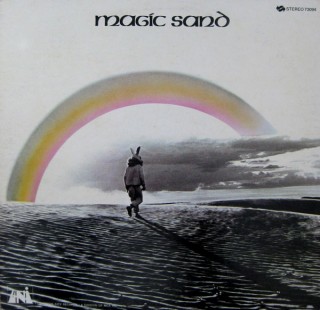
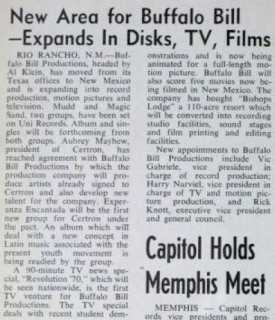
A. Klein is Al Klein, head of Buffalo Bill Productions. He may have been the same Al Klein who was Southwestern district sales manager for Motown in the mid ’60s. Vic Gabriele, who had been in the Monkeymen (“Route 66” / “Mojo” on QQ 311) and the Piggy Bank (“Thoughts of You” / “Play With Fire” on Lavette), and whose name also turns up on Magic Sand writing credits, was vice president for Buffalo Bill productions. Harry Narviel and Rick Knott were other employees.
—–
Thank you to Bill Chreist, Gregor Kessler, Alec Palao, Max Waller and Westex for their help with this article.

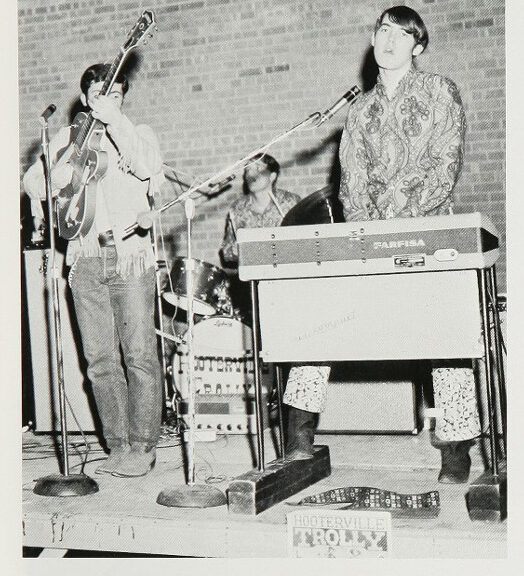
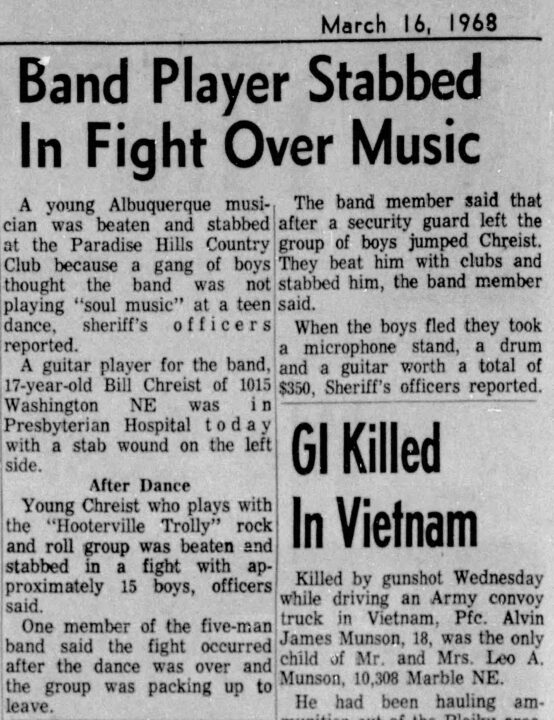
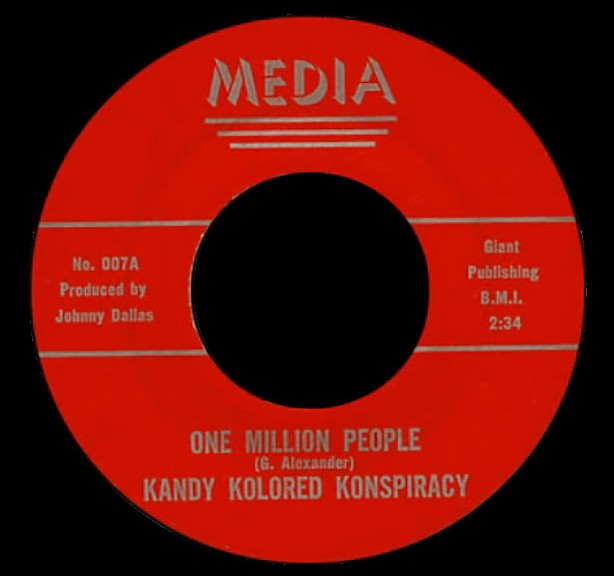
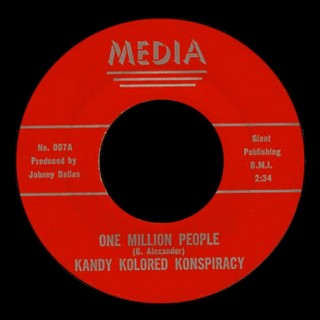 My name is Gary Lane Anderson, and I was the songwriter and lead singer/lead guitar for Kandy Kolored Konspiracy — one of my early bands.
My name is Gary Lane Anderson, and I was the songwriter and lead singer/lead guitar for Kandy Kolored Konspiracy — one of my early bands.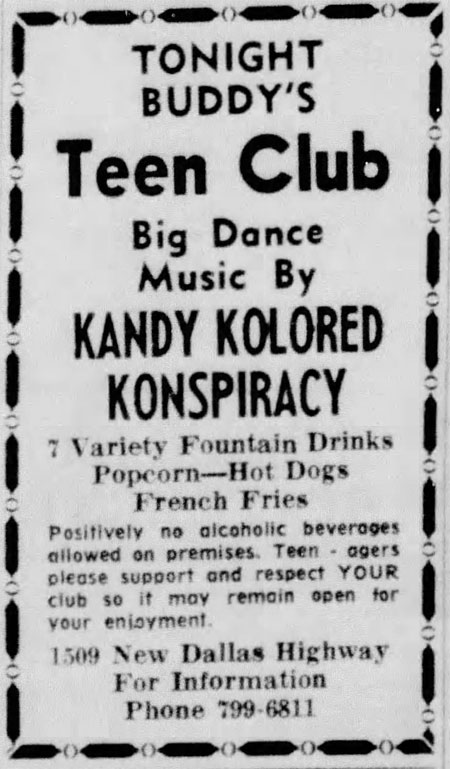
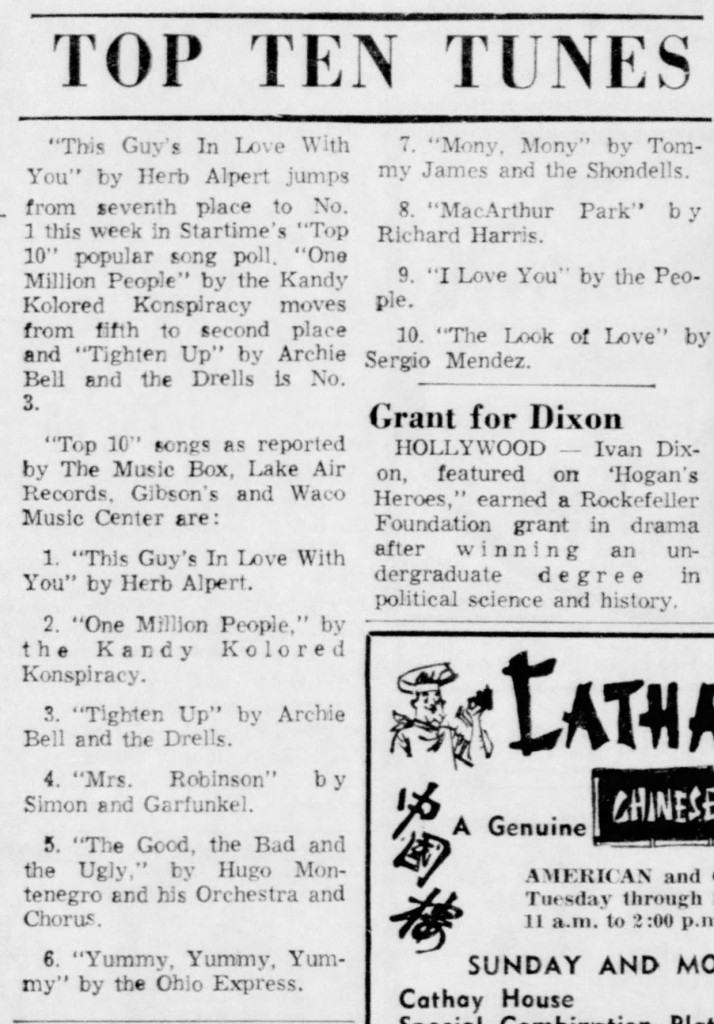
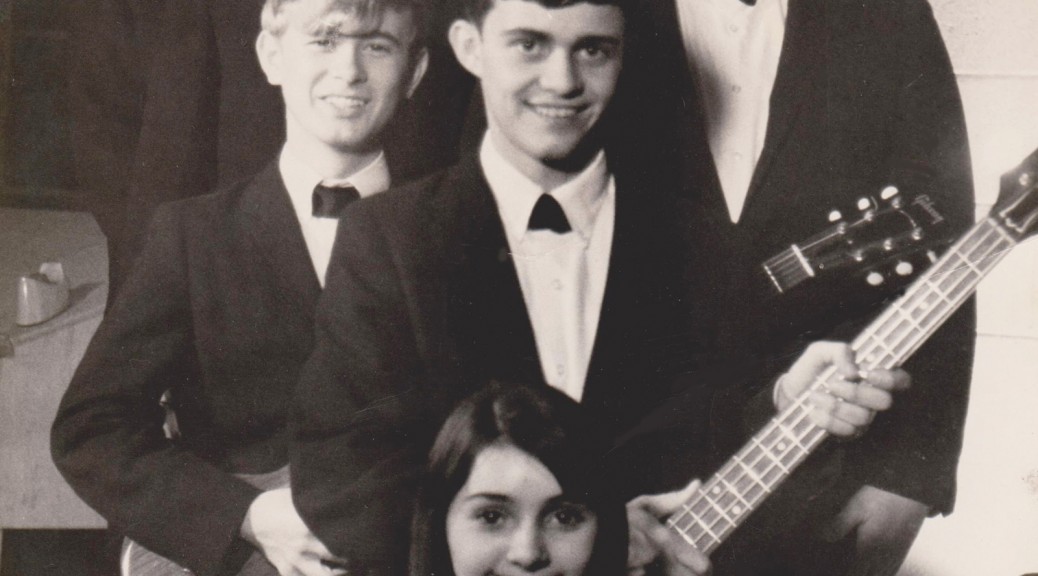
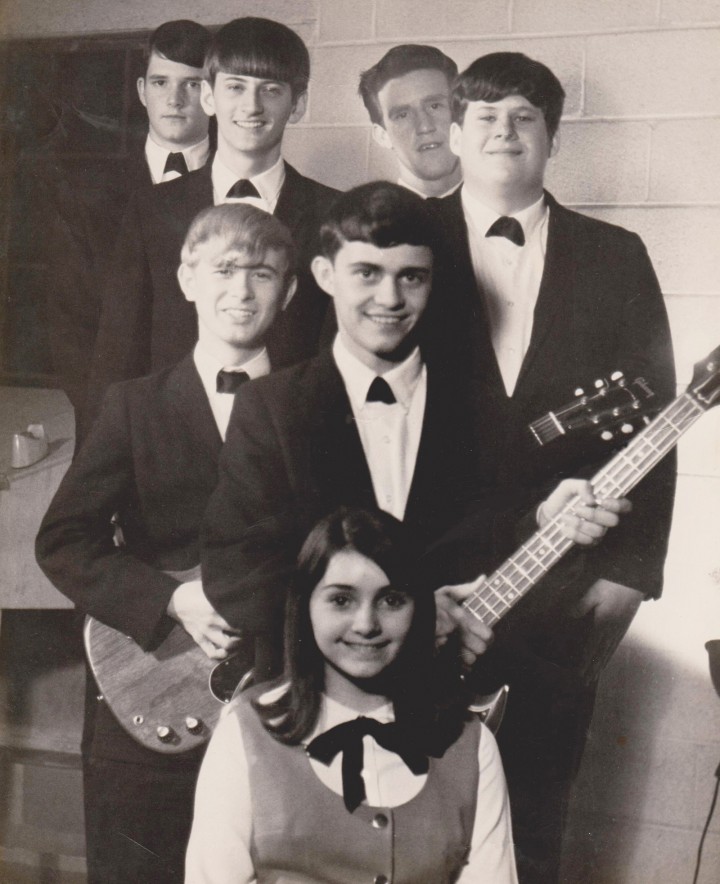
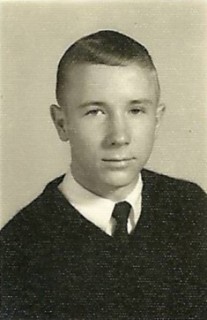
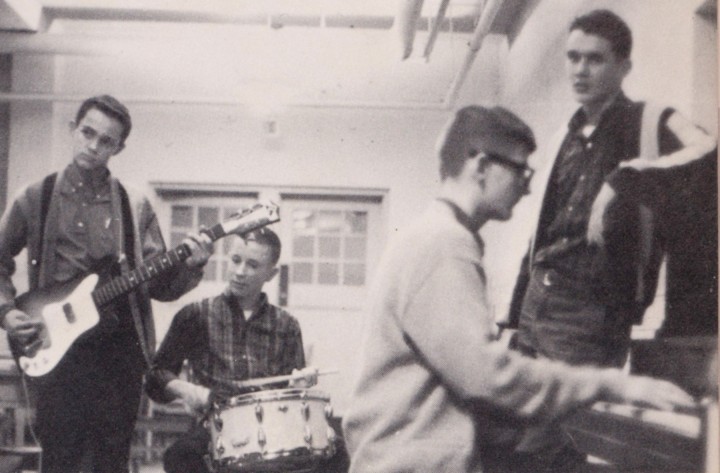
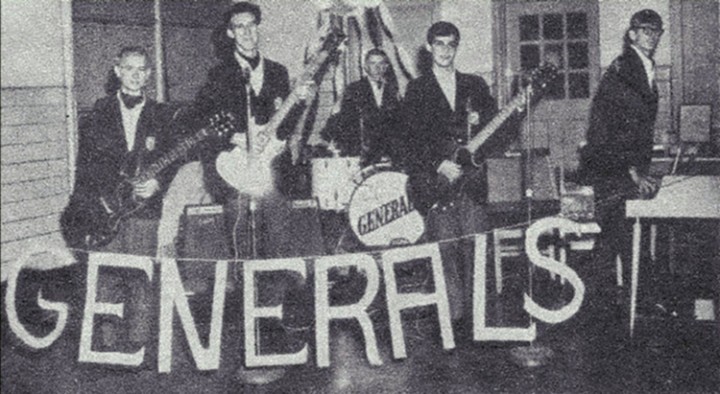
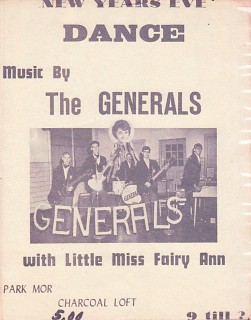
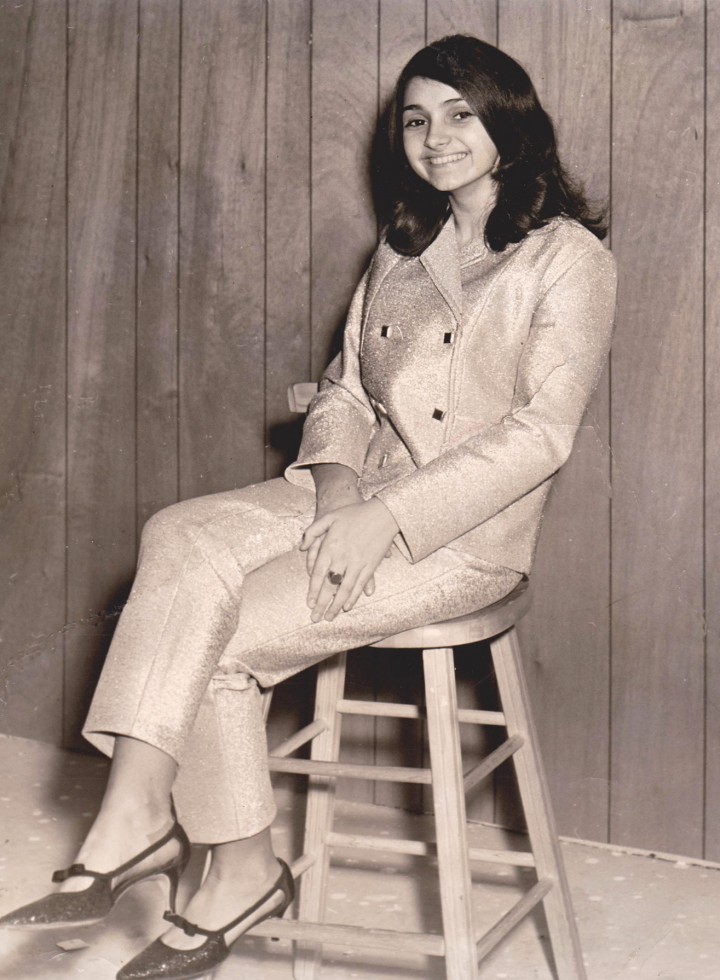
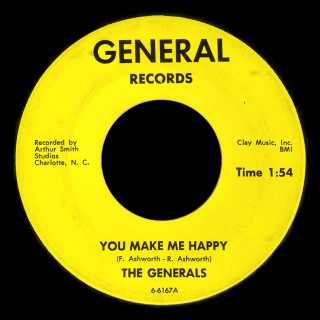
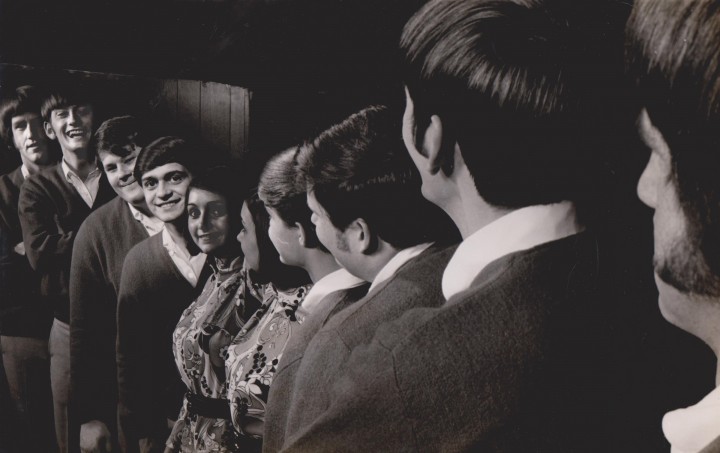
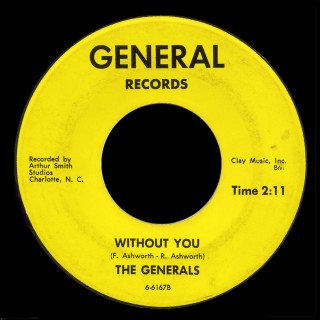
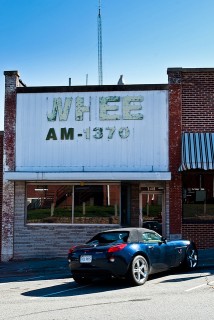
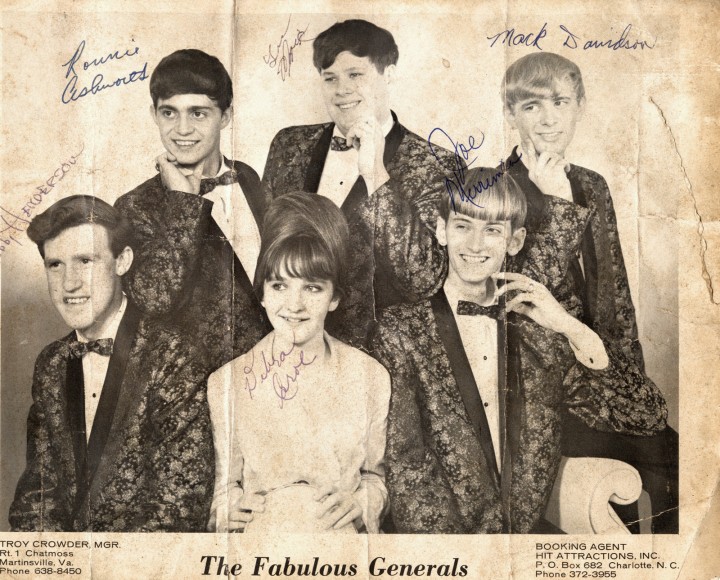
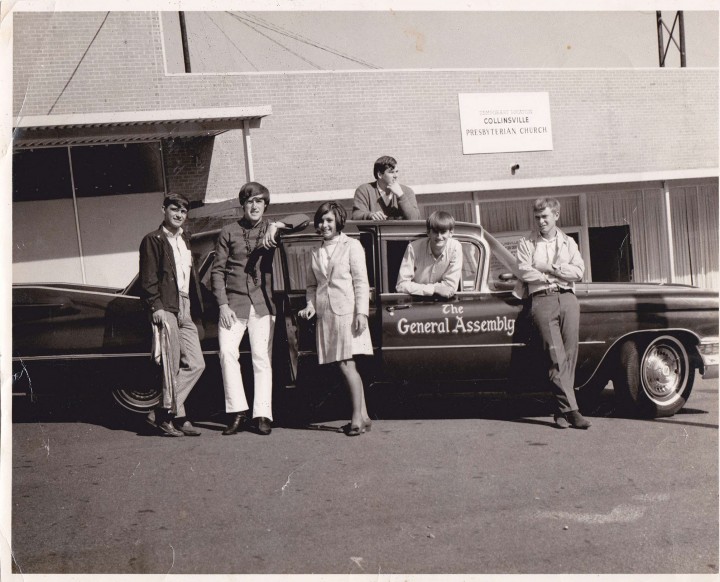
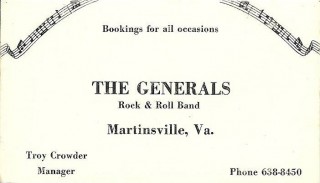
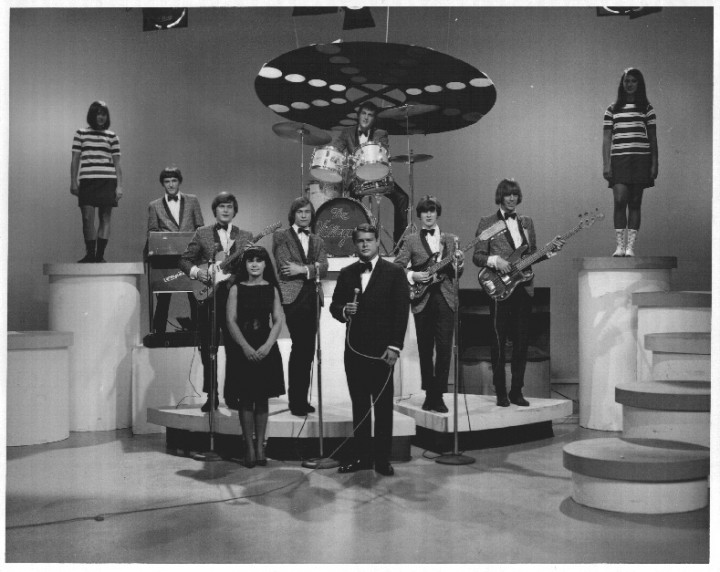
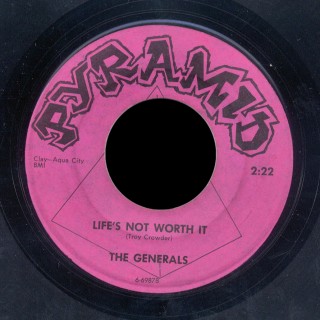
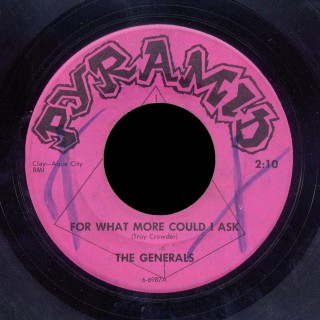 The group financed this release and Henderson says members again made a conscious decision to record original material, pointing out that their band “wrote a lot of the music we did in our live shows (some of which was never recorded) and even the covers that we did took on a personal flavor.”
The group financed this release and Henderson says members again made a conscious decision to record original material, pointing out that their band “wrote a lot of the music we did in our live shows (some of which was never recorded) and even the covers that we did took on a personal flavor.”